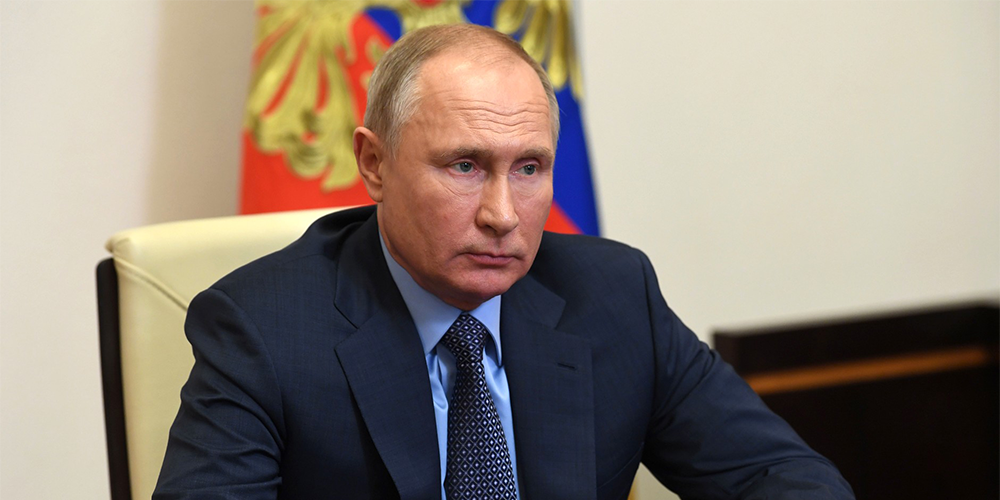At face value, the Central Bank of Russia is winning the currency war to defend the rouble against the impacts of western sanctions. In the immediate aftermath of the Russian invasion of Ukraine, and the imposition of the first batch of brutal and unexpected sanctions on Russia – including freezing CBR assets – the rouble hit a record low of Rub120 to the dollar.
But since then, in response to the CBR rolling out a series of measures to defend the currency, it has rallied back to Rub62 to the dollar, stronger than its pre-war level, the strongest rate for two years and making the rouble one of the best performing emerging market currencies this year.
Figure 1. Rouble at its strongest rate for two years

Source: Bloomberg
The CBR’s defence of the rouble has been drastic. It has deployed a range of measures over the last three months, including:
- Hiking policy rates by over 1,000bps to 20% on 28 February
- Imposing an 80% surrender requirement on exporters
- Banning foreign exchange loan and FX transfers overseas from 1 March
- Banning short selling across Russian markets
- Banning non-residents from selling securities;
- Banning dividend and interest payments to non-residents
- Limiting Russians exiting the country with more than $10,000
- Limiting all money transfers overseas by individuals to $5,000
- Banning bank transfers to ‘unfriendly’ countries
- Imposing a commission of 30% on FX transactions by individuals
- Banning the purchase of cash foreign currency (albeit those with foreign currency accounts will be able to withdraw up to $10,000 in cash, the rest in roubles)
As the rouble has rallied back, some of these restrictions have been eased, with the export surrender term requirement extended from three days to 60, the tax on FX transactions cut to 12% and policy rates cut back to 14%.
But with foreign participants largely on the side lines, liquidity constrained and media reports suggesting that the retail cash rate for the rouble is still in the mid-70s, it is hard to call the current rouble rate a market-determined rate.
It seems as though the rouble is being maintained at artificially over-valued rates now to push some propaganda narrative that Russia is still well insulated from the war, and in fact is benefitting from an improved current account performance, which is reflected in the strong rouble.
CBR reports do suggest a huge improvement in the current account position, helped by higher oil and commodity prices. The CBR reports the current account surplus almost tripled to $95.8bn from January to April. CBR data should be taken with a pinch of salt these days though as it has suspended publication of most data.
The CBR data on the tripling in the current account surplus is not entirely consistent with data on FX reserve assets. This suggests a near $50bn decline in FX reserves to around $593bn (inclusive of the near $300bn thought to have been frozen by western sanctions) as of early May. One might have assumed that the huge current account surplus would have driven both FX appreciation but also a big increase in FX reserves.
That it has not suggests that Russia has suffered a huge wave of capital flight (close to $150bn in the same four-month period). It also suggests that the CBR has most likely been aggressively intervening to defend the rouble, which perhaps partly explains the rouble’s strength, and suggests it might be somewhat artificial.
And, while the CBR might be celebrating the resilience of the rouble, the aggressive capital controls and policy rate hikes used in its defence are not cost-free. They will further stall/recess economic activity. This has already been seen in a collapse in import demand. Sanctions are also partly resulting in fewer foreign products on the shelves and fewer western goods to buy.
This will mean weaker growth, already reflected in forecasts for real gross domestic product growth, or the lack of it, in Russia this year – the range of estimates is now for real GDP to decline by between 8% to 12%. A strong currency, FX convertibility restrictions and sanctions making critical imports difficult to get will further dim the outlook for growth beyond this year.
The result of all this is that Russia, and Russian people, will inevitably be poorer. Growth and living standards will decline/remain depressed. A vicious cycle will most likely ensue of a brain drain, capital flight and lowering of potential growth, which surely will eventually play out on the rouble.
Even on the commodity price angle Russia, and the rouble, should not expect an enduring windfall. Once the war in Ukraine ends, commodity prices will likely moderate, but the West will inevitably accelerate the push to diversify supplies and reduce dependency on Russia as a supplier. Russia will hence suffer lower volumes and prices for key commodity exports, which also does not square with a strong rouble.
Timothy Ash is Senior Sovereign Strategist, Bluebay Asset Management.
